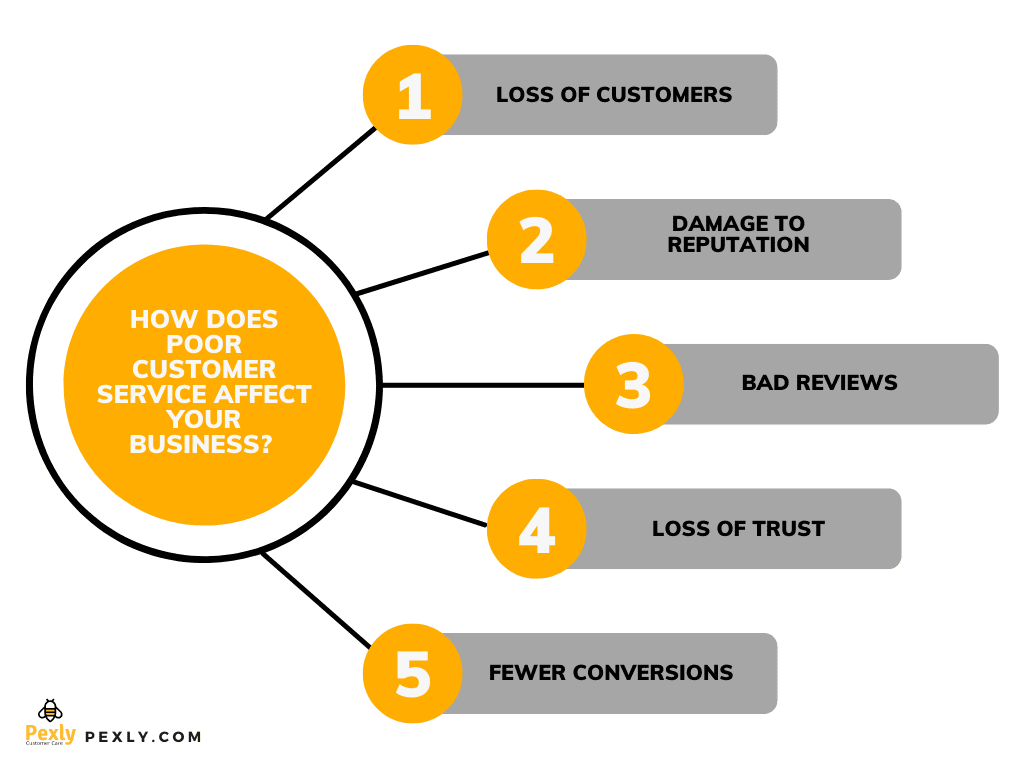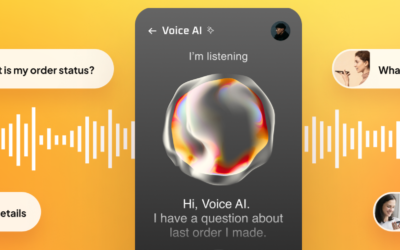Most businesses would agree that customer care service plays a key role in a company’s growth and development. After all, an NPS Promoter score has a customer lifetime value that’s 600%-1,400% higher than a Detractor However, how the organization chooses to approach its customer service can significantly vary for each industry. There’s no one-size-fits-all blueprint for delivering excellent customer service, and sometimes brands fall short when trying to improve their customer’s experience.
Some customer service blunders are easy to understand. Others leave customers shaking their heads and wondering what the company was thinking in the first place. While these interactions are often worth a few good laughs, these extreme cases of bad customer service occur much more often than one may think. In fact, we collected a list of some of the most common bad customer service examples that businesses will want to be aware of. However, before we get into that, let’s get an overview of what bad customer service is.
What is Bad Customer Service?
Poor customer service happens anytime your business fails to meet a customer’s expectations. It could be the quality of service your customer received, how long it takes for you to answer their phone call or just their overall experience with your brand. We often think of bad customer service as just being rude to customers or ignoring their requests. While these certainly are instances of bad service, sometimes negative experiences come from something as simple—and as easily preventable—as a poorly implemented customer service software or a customer service strategy that wasn’t properly thought through.
Good Customer Service vs. Bad Customer Service
To get a better understanding of the difference between good and bad customer service, let’s take a look at an example of two online stores. At store A, a customer has a variety of communication channels available in terms of how they want to contact the store. They can do so at any time since the store offers 24/7 support. Furthermore, there is almost no hold time when you call in, and the agent is always happy to help.
Store B only offers support during its business hours which usually doesn’t match up with customers in other time zones. Not only is it inconvenient to contact support, but the agents are not knowledgeable about the product and are constantly transferring the call from one person to another. Needless to say, this provides the customer with a bad experience.
How Does Poor Customer Service Affect Your Business?

Companies have to bear serious consequences when their customer service is poor. Consumers have changed. There is a simple reason behind this. Back in the past, they had a couple of options to choose from, and finding an alternative product or service was time-consuming and difficult. Therefore, even after getting poor treatment, they would stick with the company. Now, it is entirely different. No matter what product you get or which service you choose, there will be a hundred alternatives available. If the customer feels mistreated and the customer service is not up to the mark, they will move on without a doubt. We live in a connected world, and if the customers are not satisfied with the service, they will go on a social media rampage. This will spoil the reputation of your company, and there is no way you will be able to gain their trust back again.
To help your company avoid providing substandard service, let’s take a look at some examples of bad customer service as well as some tips on how to overcome these issues.
Reasons for a Bad Customer Service Experience (And How to Fix Them)
A lot of the bad customer service stories you hear stem from the following reasons:
1. Putting Customers on Hold for Too Long
When a customer calls your support team, they expect to wait for less than a minute. If it takes you more than that to answer a call, you are not providing your customers with great experiences. One of the best ways to overcome this is to expand your in-house team with additional agents or set up an entire offshore team who will be able to handle the needed call volume.
2. Using Negative Language
One of the biggest reasons for customer service failure is that the agent uses negative language. If the agent gets negative, then the customer will follow in the same manner. That’s why you should train your agents to stay positive no matter what and always have phrases available to steer the conversation in a positive direction.
3. Transferring Callers Again and Again
Customers are usually already pretty frustrated by the time they decide to reach out to you. So when your agents start transferring them from one person to the next, this only adds to their aggravation. One of the best ways to solve this is to have an escalation process in place. That way, the agents know right away which calls they can handle.
4. Asking Customers to Repeat
When you ask customers to repeat what they just said, you are giving off the impression that you are not really listening. In fact, one of the main reasons why customers contact support is to have somebody in the company listen to them. Be sure to practice active listening with your agents, so they always know what the customer is saying the first time around.
5. Agents Offer No Empathy
Having issues with a product or service can be very stressful, and your customer would very much appreciate it if you could place yourself in their shoes and experience what they are going through. This requires a lot of training on your part to get the agents to show the needed amount of empathy to help the customer feel comfortable.
6. Directing Customers to the Website
Your customers did not contact your support team only to be told to go to the Website. After all, they can read. What they are looking for is an answer to a specific question that is unique to their circumstance. Be sure that your agents have a knowledge base of commonly asked questions that they can go to and get the needed answers quickly and also make sure they have enough knowledge about the product to handle customer inquiries.
7. Rude Behavior and Bad Attitudes
This is something we already talked about in the section about good and bad customer service examples. Your customers have plenty of choices in terms of competitors they can go to, and they will not tolerate any rudeness whatsoever. Be sure that your agents are always aware of this when speaking with customers, and they are trained in how to handle rude callers, so they themselves do not answer in a rude manner.
Why You Should Choose Pexly for Quality Customer Service
Throughout our eight years of experience, we have set up many offshore teams and trained countless agents on how to handle any circumstance the job can throw at them. We focus on hiring the right people and training them on the latest methods and techniques to ensure outstanding service. If you are looking to expand your in-house support team or set up a new dedicated offshore team, contact us today to learn more about how we can help you.



